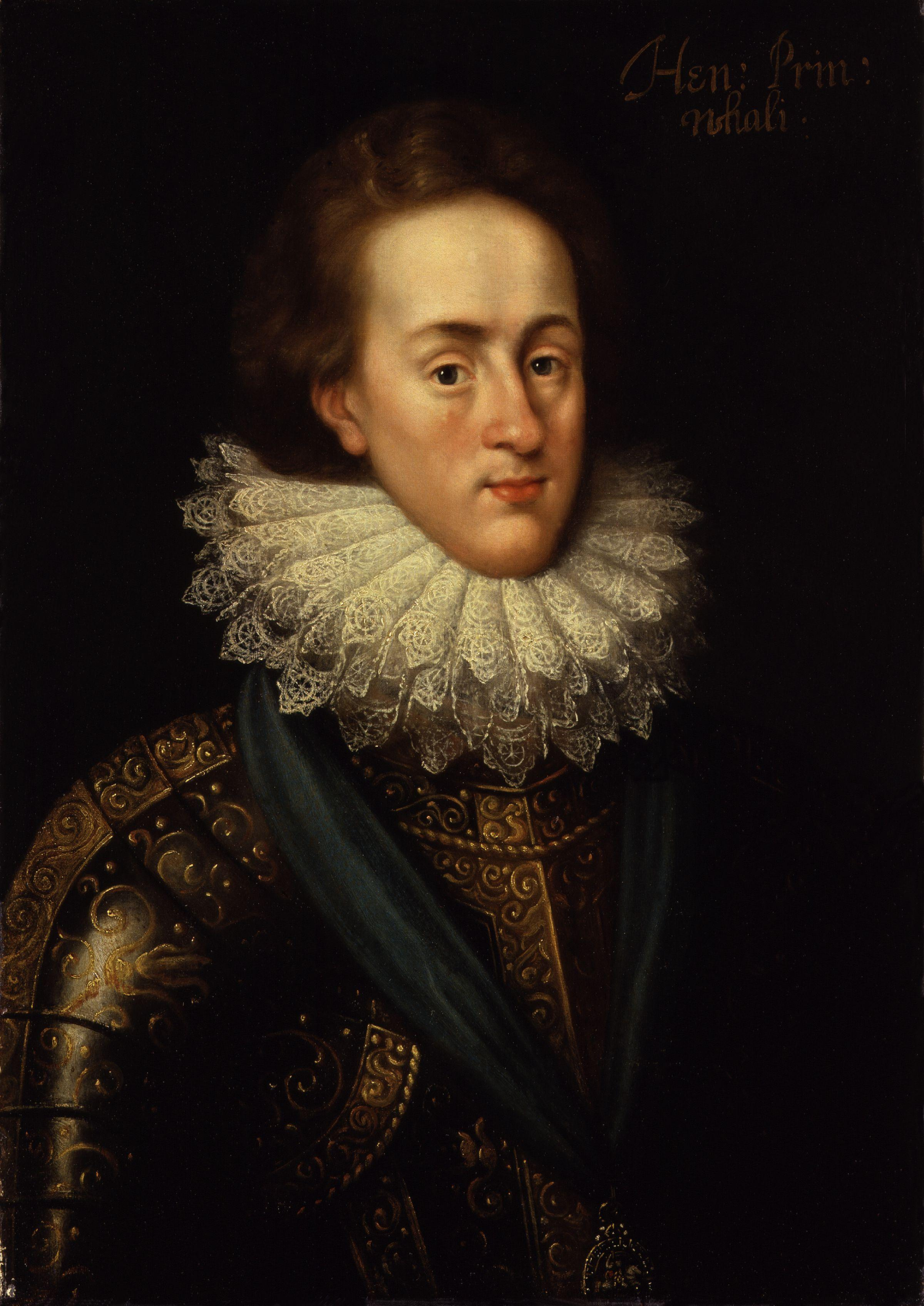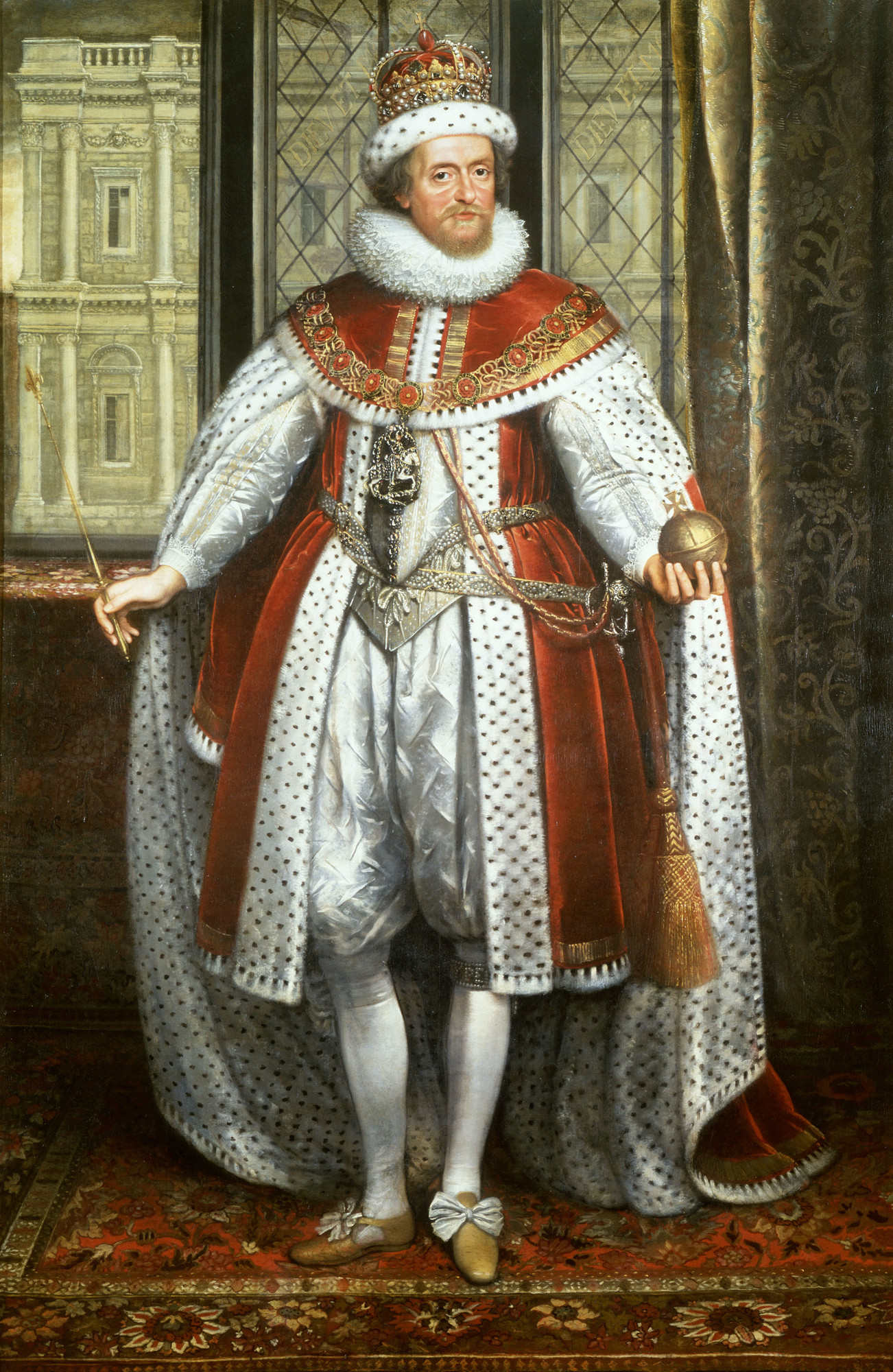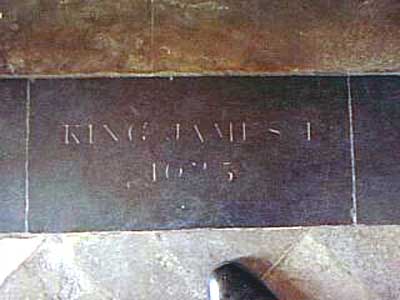by Susan Flantzer © Unofficial Royalty 2015

James VI, King of Scots/King James I of England; Credit – Wikipedia
King James VI’s reign in Scotland was 57 years and 246 days, longer than any of his predecessors. In 1603, upon the death of Queen Elizabeth I of England, James also became King of England and reigned there for nearly 22 years. James was born in Edinburgh Castle in Edinburgh, Scotland, on June 19, 1566. He was the only child of Mary, Queen of Scots and her second husband (and first cousin), Henry Stewart, Lord Darnley, both grandchildren of Margaret Tudor, daughter of King Henry VII of England and sister of King Henry VIII of England. James was baptized Charles James in a Catholic ceremony at Stirling Castle. His godparents were King Charles IX of France, Queen Elizabeth I of England, and Emmanuel Philibert, Duke of Savoy. All of the godparents were represented by other people at the christening.

James’ parents, Henry, Lord Darnley and Mary, Queen of Scots; Credit – Wikipedia
James was only eight months old when his father was murdered by an explosion at Kirk o’ Field, the house where he was staying in Edinburgh, Scotland. When James was 11 months old, Protestant rebels arrested his Catholic mother and imprisoned her in Loch Leven Castle. Mary never saw her son again. She was forced to abdicate on July 24, 1567, in favor of James and to appoint her illegitimate half-brother, James Stewart, 1st Earl of Moray, as regent. Little James was crowned on July 29, 1567, at the Church of the Holy Rude in Stirling, Scotland.

A young James VI, King of Scots; Credit – Wikipedia
In 1568, Mary escaped from her imprisonment at Loch Leven Castle. After being defeated at the Battle of Langside, Mary was forced to flee to England and was subsequently imprisoned by Queen Elizabeth I of England. She remained imprisoned until her execution in 1587, after her implication in the Babington Plot, a plot to assassinate Queen Elizabeth I. Initially buried at Peterborough Cathedral, Mary’s remains were exhumed upon the orders of her son in 1612, then King of England, and were reburied in a marble tomb with an effigy in Westminster Abbey in a chapel opposite the tomb of Queen Elizabeth I.
James was consigned to the care of John Erskine, Earl of Mar. He was brought up in the Protestant Church of Scotland and was educated by a group of tutors led by the Scottish historian and humanist George Buchanan. During his childhood, James was controlled by powerful nobles and the clergy of the Church of Scotland and was merely a pawn in their machinations.
Throughout his life, James had close relationships with male courtiers, which has caused debate among historians about the nature of the relationships. However, marriage was necessary to provide heirs to the throne. On August 20, 1589, James was married by proxy to Anne of Denmark at Kronborg Castle in Helsingør, Denmark. Anne was the eldest daughter of King Frederik II of Denmark and Sophie of Mecklenburg-Güstrow, who conducted the marriage negotiations after the death of her husband in 1588. Ten days after the proxy wedding, Anne set sail for Scotland, but severe storms forced her to land in Norway. Upon hearing this, James set sail to personally bring Anne to Scotland. On November 23, 1589, the couple was formally married at the Bishop’s Palace in Oslo, Norway. After a prolonged visit to Denmark, James and Anne landed in Scotland on May 1, 1590.

King James I of England and VI of Scotland and Anne of Denmark by Renold or Reginold Elstrack (Elstracke) line engraving, early 17th-century NPG D25686 © National Portrait Gallery, London
James and Anne had seven children, but only three survived childhood:
- Henry Frederick, Prince of Wales (1594 – 1612), unmarried, died of typhoid fever, aged 18
- Elizabeth (1596 – 1662), married Friedrich V, Elector Palatine, had issue, including Sophia of Hanover, who became heiress presumptive to the British throne under the Act of Settlement 1701; Sophia’s son was King George I
- Margaret (1598 – 1600), died aged fifteen months
- King Charles I of England (1600 – 1649), married Henrietta Maria of France, had issue, including King Charles II and King James II
- Robert, Duke of Kintyre (born and died 1602), died aged four months
- Mary (1605 – 1607), died aged two.
- Sophia (born and died 1606), lived only one day

‘James I and his royal progeny’ by Charles Turner, published by Samuel Woodburn, after Willem de Passe mezzotint, published 1814 NPG D9808 © National Portrait Gallery, London
James was the author of several works including Daemonologie (1597), in which he supports the practice of witch-hunting, True Law of Free Monarchies (1598), in which he sets out the doctrine of the divine right of kings that proved fatal to his son and successor King Charles I, and Basilikon Doron (1599), written as a book of instruction for his heir Prince Henry. After Prince Henry died in 1612, James gave it to his second son, later King Charles I.

Henry, Prince of Wales; Credit – Wikipedia
In 1586, James signed the Treaty of Berwick, a peace agreement between Scotland and England. The treaty included a defensive pact should either Scotland or England be invaded and provided James with an annual pension of £4,000 from England. This led many to believe that Queen Elizabeth I already considered James an heir to the English throne. Since none of the children of King Henry VIII had children, James was the senior heir of King Henry VII through his eldest daughter, Margaret Tudor. From 1601 onward, Sir Robert Cecil, Queen Elizabeth’s chief minister, maintained a secret correspondence with James to facilitate a smooth succession. On her deathbed, Queen Elizabeth gave her assent that James should succeed her. Elizabeth died on March 24, 1603. James entered London on May 7, 1603, and his coronation was held on July 25, 1603.
James was now James VI, King of Scots and King James I of England. The following Stuart monarchs of England were also Kings/Queens of Scots until 1707, when Scotland and England were united into a single kingdom called Great Britain: Charles I, Charles II, James II, Mary II, William III, and Anne.

King James I of England in his coronation robes; Credit – Wikipedia
Some important events of King James I’s reign:
- “Golden Age” of Elizabethan literature and drama continued, with writers such as William Shakespeare, John Donne, Ben Jonson, and Sir Francis Bacon
- Survived two plots to overthrow him in 1603: Bye Plot and Main Plot
- Made peace with Spain in 1604: Treaty of London ended the Anglo-Spanish War
- Gunpowder Plot, 1605: Catholic Guy Fawkes conspired with others to blow up Parliament, the plot was averted
- Popish Recusants Act, 1606: required citizens to take an Oath of Allegiance denying the Pope’s authority over the king
- English colonization started in North America with the founding of Jamestown, Virginia in 1607
- King James Version of the Bible: an authorized version of the Bible completed in 1611
- James I dissolved Parliament in 1610 and 1614: James I reigned without Parliament from 1614 – 1621
- Spanish Match, 1614 – 1623: a proposed marriage between James I’s son and heir Charles and Infanta Maria Anna, the daughter of Philip III of Spain. The negotiations were closely related to British foreign policy and religious policy, and were ultimately unsuccessful

Anne of Denmark, 1617; Credit – Wikipedia
In 1619, James’ wife Anne died, aged 44, from dropsy (edema) after suffering extended bouts of debilitating illness since 1617. She was buried in the Henry VII Chapel at Westminster Abbey in London, England. James’ health began to suffer from arthritis, gout, and kidney stones when he was about 50 years old. During the last year of his life, he was rarely well enough to visit London. In March 1625, James became ill with a recurring fever and then suffered a stroke. He died on March 27, 1625, aged 58, at Theobalds House in Hertfordshire, England, one of his favorite country homes. He was buried in the Henry VII Chapel at Westminster Abbey in the vault of Henry VII and Elizabeth of York, his great-great-grandparents. Plans were drawn up for a monument in the classic style, but the monument was never built. Only an inscription on the floor of the chapel marks his grave.

Inscription on the floor of the Henry VII Chapel at Westminster Abbey marking the nearby grave of James I; Photo Credit – findagrave.com
House of Stuart Resources at Unofficial Royalty
- United Kingdom of Great Britain and Northern Ireland Index
- House of Stuart Index
- Coronations after the Norman Conquest (1066 – present)
- First Cousins of King James I
- History and Traditions: Stuart Weddings
- House of Stuart Burial Sites
- House of Stuart Christenings
This article is the intellectual property of Unofficial Royalty and is NOT TO BE COPIED, EDITED, OR POSTED IN ANY FORM ON ANOTHER WEBSITE under any circumstances. It is permissible to use a link that directs to Unofficial Royalty.
